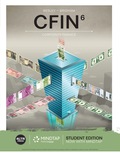A stock has yielded returns of 6 percent, 11 percent, 14 percent, and -2 percent over the past four years, respectively. What is the standard deviation of these returns? Group of answer choices 5.52 percent 5.86 percent 6.05 percent 6.47 percent 6.99 percent
A stock has yielded returns of 6 percent, 11 percent, 14 percent, and -2 percent over the past four years, respectively. What is the standard deviation of these returns? Group of answer choices 5.52 percent 5.86 percent 6.05 percent 6.47 percent 6.99 percent
Chapter8: Analysis Of Risk And Return
Section: Chapter Questions
Problem 17P
Related questions
Question
A stock has yielded returns of 6 percent, 11 percent, 14 percent, and -2 percent over the past four years, respectively. What is the standard deviation of these returns?
Group of answer choices
5.52 percent
5.86 percent
6.05 percent
6.47 percent
6.99 percent
Expert Solution
This question has been solved!
Explore an expertly crafted, step-by-step solution for a thorough understanding of key concepts.
This is a popular solution!
Trending now
This is a popular solution!
Step by step
Solved in 5 steps with 4 images

Knowledge Booster
Learn more about
Need a deep-dive on the concept behind this application? Look no further. Learn more about this topic, finance and related others by exploring similar questions and additional content below.Recommended textbooks for you

EBK CONTEMPORARY FINANCIAL MANAGEMENT
Finance
ISBN:
9781337514835
Author:
MOYER
Publisher:
CENGAGE LEARNING - CONSIGNMENT


Managerial Accounting
Accounting
ISBN:
9781337912020
Author:
Carl Warren, Ph.d. Cma William B. Tayler
Publisher:
South-Western College Pub

EBK CONTEMPORARY FINANCIAL MANAGEMENT
Finance
ISBN:
9781337514835
Author:
MOYER
Publisher:
CENGAGE LEARNING - CONSIGNMENT


Managerial Accounting
Accounting
ISBN:
9781337912020
Author:
Carl Warren, Ph.d. Cma William B. Tayler
Publisher:
South-Western College Pub
